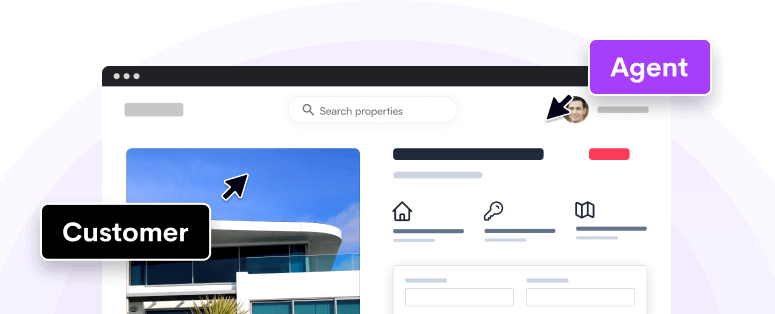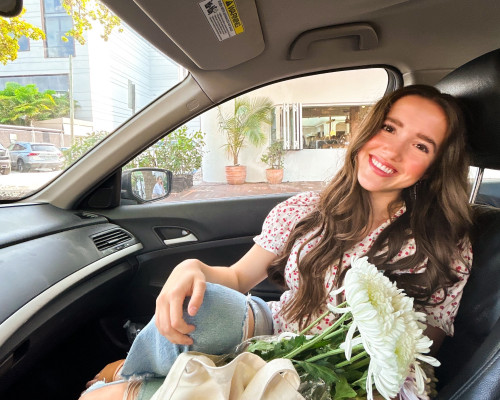You hear about story telling, you hear about viral content and then you end up
just doing regular blog posts. This is an edited transcript of how Buzzfeed
did viral story telling in a great talk by Jonathan Perelman. Considering
Facebook’s recent announcement’s on more personal stories, the need to adapt
content to something that resonates is becoming essential.
Key points covered
What works on Pinterest does not work on Facebook, learn what works.
Social is the starting point, not google.
Don’t market content to people who really don’t care about it.
Crack the code about creating content people want to consume.
We can all create genuine, authentic and meaningful stories now.
How Buzzfeed does it.
How you can do it.
Transcription
The reality is that the media landscape has changed so much, so much of what
Gary talked about being invited in how are we you know thinking about content
for 24 months from now that’s the way that BuzzFeed thinks .
Telling stories that think about distribution for 200% yearly growth
Here’s just a lovely graph on our growth eighty-five million uniques last
month, two hundred percent year-over-year, we are growing because we are
telling stories in a new way.
Telling stories that thinks about distribution.
Content is king but distribution is queen
My thought is content is king but distribution is Queen and she wears the
pants. You’ve got to understand great content is the base. That has to work
but beyond that, understand the distribution channels. What works on Pinterest
does not work on Facebook necessarily and it’s totally different on Twitter
and we’ll get into it.
The digital world has moved from portal, to search, to social. Social is the
starting point.
About.com, I don’t think they get enough credit being a really powerful media
company in the search age. You couldn’t do a search for anything on Google
without an about.com story coming up in the first page right? They figured out
SEO, they figured out how to do it.
Google is not the starting point, social is
With social, google is not the starting point.
You’re checking your email, you’re checking out Twitter, what people do last
night. I’m pinned on on tumblr. You’re looking at Pinterest.
This is what we’re doing this is the starting point online how are we getting
our message across on these platforms.
We consume different kinds of content, one after the other
Look at your feed, your feeds gonna have pictures of your nieces of your
nephews of your friends kids right?
You’re gonna have your political friend who’s talking about what’s new in
politics.
Your friend that’s really concerned about Syria will be there.
You’re gonna have your friend that thinks that they’re funny telling a joke.
You’re gonna have someone else posting something else.
Never before have we consumed content of all different kinds right after each
other right? Think about the newspaper. The newspaper says this is the front
section, this is news. This is the business section, this is sports, this is
Arts and Leisure. We don’t live in that world anymore, we live in a world
where all different kinds of content is coming together at once in one feed.
Miley Cyrus and a fire in Syria
You as likely to see Miley Cyrus in your feed as you are to see a picture of
fire in Syria.
It’s okay and normal because we are human beings as Gary pointed out, to like
both, to be interested in both.
The reason this works is because publishing in content today is like a Paris
cafe.
So let’s all get on a plane and go to Paris and we’re sitting at a cafe right?
We’re sitting down we’re having a glass of wine we’ve got Sartre, we’ve got
our philosophy. We’ve got La monde, the news, we’re really serious right.
Someone sits down next to us. You tell a joke, you’re sort of making small
talk, you bend down to pet their dog, cuz of course they’re gonna have a dog.
You’ve turned your back on news and philosophy right but you’re not dumb
you’re human.
We can care as much about news and philosophy as we can about the dog and it’s
okay. You would never think to go to a cocktail party and say I’m just gonna
talk about myself the whole time right and if you did you’d never be invited
back. We are humans we are interested in a lot of different things.
Social, digital today, has allowed us to talk about all different kinds of
things at once. We’ll talk about Miley Cyrus’s thing at the VMAs and we’ll
talk about Syria and you know what, the same person will be interested in
both.
You look at the 1960s and 70s when the New York Times circulation of the paper
went up why did it go up did they start doing better reporting. No, they
started with an Arts and Leisure section a dining out section, science times.
They started doing other things that people were interested in because it’s
not just about news it’s also about being entertained.
Do you think 22 year olds give a shit about an $8,000 Safari?
Some of the more traditional publishers will ask well how do we get a younger
audience you know our audience is getting really old?
You say, well your travel section in your publication it’s talking about an
$8,000 Safari to Namibia.
You want to get 22 year olds who give a shit? You think they give a shit about
this $10,000 trip?
No, it’s the most indebted generation in the history of America.
They don’t care about that, it doesn’t mean anything to him it doesn’t
resonate with them at all.
DIY hacks about how to make your life, better talk to me about that,
that’s something interesting. How am I being entertained by Beyonce’s
incredible dance moves? Yeah.
Cracking the code about creating content people want to consume
At Buzzfeed we have a long read section, five or six thousand word stories.
Things about like growing up in Juarez Mexico, the most dangerous city in the
world. What’s that like? That’s important. So, we’ve been able to crack this
code about how to create content that people want to consume but also want to
share.
The reading of an article on BuzzFeed is just the first step. The most
important step is going on to your favourite network and sharing it because
the peer-to-peer influence and the recommendation is incredibly powerful.
We used to live in the broadcast model world, you get home 6:30 you watch the
nightly news, now we live in this social web, you have these concentric nodes
of people that are passing around information anybody with a Facebook account
or a Twitter account as likely to get something seen across the web as the
nightly news used.
It’s really really powerful. What this means is that we can do word-of-mouth
from a marketing perspective, there’s never been a better tool. We can now do
this at scale, at internet scale. Word-of-mouth marketing at internet scale is
possible.

Did you wake up this morning and think “I want to see a pic of this dog!”
What is this? A fat dog. What kind of dog? A basset hound. What’s that basset
hound doing? Running. Those are basset hounds running.
How many of you woke up this morning said, you know what I need to see in my
day today? Gosh I really want to see some basset hounds running. If you did
we, should talk, you probably need to be working at BuzzFeed.
Nobody thinks, oh gosh. look at that, that’s really amazing. I need to see 22
more pictures of this. But when you see this in your Facebook feed when your
friend passes this to you, if you don’t laugh, if this doesn’t evoke some sort
of emotion, you are the robot.
That pic of basset hounds running is content that can live forever
So let’s look at this piece of content. Basset hounds running, it is
incredibly simple. This continues to drive traffic because this is the kind of
content that can live forever right.
You’re having a really bad day, you can sort of remember you saw this and you
will google it, gosh those basset hounds, what does that look like.
Your friend is having a bad day, you can pass him this piece of content. One
another post we did was like, if you’re having a bad day, well, if Britney
Spears can survive 2007, you can get through this day.
The science of it
The above is the art, now let’s look at the science.
A couple weeks after this launched three hundred eighty six thousand views of
this piece of content.
Twelve thousand of those views came from people on BuzzFeed.com.
Three hundred seventy four thousand of those views came from social, came from
someone saying oh my god this is too funny I have to share this.
That’s the number we care most, about that’s the social lift, how often is a
piece of content reproduced across the social web? Thirty-three times more
people came across this piece of content coming in through social than they
did on BuzzFeed. Look where it came. The number one referral? Stumble upon.
Stumble upon picked this up it went it went viral. Ninety five thousand people
from Facebook. Fifty five hundred people, fifty five hundred out of three
hundred seventy four thousand came in via Twitter.
Everybody thought long form journalism was dead
I talked about this, surviving Juarez. Five thousand word story on surviving
Juarez growing up in Juarez Mexico. Look at this, shares differently right?
Everybody thought long form journalism was dead ,digital had killed it? No.
150,000 views in the first two weeks. I don’t think it’s dead.
Look, more people came to this from BuzzFeed than they were referred in by the
social web, maybe not surprising but look where they came from. Direct. That’s
dark social. That’s emails or third party widgets that you can’t track.
Surviving Juarez is twitter content. Basset hounds running is Facebook
Longform.org blogs picked this. Long form blogs picked this up. Twitter 5200.
The last one had fifty five hundred thousand people come to a piece of content
via Twitter that had almost three hundred ninety thousand people total. This
is a lot lower number but almost the same exact from Twitter. This is Twitter
content, basset hounds running is Facebook.
Social storytelling meets video now.
Anyone can be a be a producer. You can have something like a hundred hours of
video uploaded to YouTube every minute. I mean it is absolutely insane. You
can tell your story now in sight sound and motion and you have a distribution
platform built in with hundreds of millions of eyeballs.
How to piss off every New Yorker in 36 seconds
Some of the stuff that BuzzFeed? How to piss off every New Yorker in 36
seconds. We do a true fact series true facts on the anglerfish, the most
misunderstood fish in the sea. Twelve million views story about the angler
fish. Its storytelling meets sight sound in motion with the ability of of
social for content to spread. We’ve done partnerships with CNN BBC and CNBC
because they have said ‘how do we do it?’, how do we create content.
Somebody asked this earlier about do you start with the long-form piece and
then cut into short form, we take the other approach. We take a short form
piece, cut it up, if you’re interested you can go and watch the two-hour
documentary on animals on BBC.
Genuine, authentic and meaningful stories we can all do
Okay so if content is social, ads can be too right? We went from portal, to
search, to social. It’s now banner paid search to social content when it comes
to an ads perspective. You can tell a story, a brand can tell a story. It can
be genuine, authentic and meaningful.
Gary talked about the stats clicking on banner ads. You’re more likely to
summit Mount Everest then you are to click on a banner ad. It’s impossible to
tell a story in that real estate.
How does Buzzfeed do it?
BuzzFeed does social content, we create content for brands, where we help tell
their story. So how do we do it?
Tell the story of your brand in a way that resonates with humanity
Prius is a hybrid car right?
Hybrids weren’t seen as very cool when this first came out. So what about the
20 coolest hybrid animals?
How about telling the story about the 20 most scenic drives in America? You
know what’s interesting about all those drives they’re a long way between gas
stations. You know that means? You should have a hybrid car.
Think about telling the story of your brand in a different way, in a way that
resonates with people, with humans.
Telling the story that GE has been timeless
GE is timeless technology. How many of you have ever bought an aircraft engine
online? How about a locomotive? GE, most of their products you don’t even buy
online right? but they are about timeless technology. So what did they? They
took over BuzzFeed. We created pieces of content for them for every decade
from 1890, when they were created. Actually all the way back to medieval times
in prehistory. This is an example from the 1950s content like a man’s life in
the 1950s was not easy. The ad unit here was their original ads from the
1950s. Right? It’s telling the story that GE has been timeless in efficiency
since creation.
The only three photographs from 1890
My favorite one of these incidentally, which is still available if you go to
the rewind section which is our nostalgia vertical all about growing up in the
80s and 90s, you can still play with this. The best three photographs from
1890, you click on it and says ‘the only three photographs from 1890’
How do you do it? What makes social content?
So now is the fun part. This is when I’ll tell you to take out your pencils.
How do you do it? What makes social content? how do you do this for yourself
for your brands for what you’re working on?
-
Have a heart. Emotion is key and positive emotion is better than negative
emotion have a heart -
Content is about identity. There are only right-handed desks in this
picture. How many of you are left-handed? Four the last five US presidents
have been left-handed, you can guess who wasn’t. This sucked. You go into
college and there are only right-handed desks and you have to write like this,
you have to sit like this. If you’re right-handed think about what it’s like
trying to write left-handed in a three-ring binder. You lose about 3/4 of a
page. It’s impossible. This is a piece of content we did ‘The 18 reasons it’s
hard to be a lefty’. About a month ago it was international left-handers day,
you righties wouldn’t know about it. This story that was two years old started
to get traction again because it’s about identity. People passed it to me
because they know I’m extremely intelligent and left-handed. I pass it to my
father, my friends who are left-handed. -
Capture emotion. The moment anybody in the marketing world is going to talk
about is Oreo and the Super Bowl right? You people know what I’m talking? The
only reason Oreo could do that is, their 100th anniversary was that year. For
365 days they had created a new piece of content that was ‘on brand’ message
capturing what was hot on the web at the time. The 370 second day of that
campaign happened to be the Super Bowl. The lights happened to go out. It was
muscle memory, the only way they were able to understand how to capture the
moment, take advantage of what was happening, was because they were doing it
the whole time. You have not heard of any of the 365 pieces of content they
created, except the one that came on the 370 second day. Enough said. -
It’s actually vital to understand that animals, cats more than dogs, are
vital to the social web. It’s not a joke. To understand how content spreads,
look at cats specifically, less so than dogs. I happen to be a dog person. -
Humor works. I named this printer Bob Marley because it’s always jamming.
Wish I had thought of that but it works right? It’s funny. You want to pass
this along, you want to be the one on Facebook to show you’re funny, you don’t
want to be the 5 millionth person to retweet something right? -
The platforms are different. If you look at how content spreads on
platforms, breaking news works amazing on Twitter but Twitter lasts for about
two or two and a half hours. Someone tweets, they’ve got a lot of followers,
it gets retweeted it spikes. As quickly as it goes up, it comes back down
because it’s in moment, it’s about timeliness. Facebook is more about emotion.
Facebook could take two three four days for a piece of content to get picked
up but as Gary says, he knows he’s gonna see it later. It could last for two
weeks, three weeks, four weeks on Facebook. Pinterest could take six months to
drive traffic to a particular piece of content it could last for two years.
The platforms are different. Understand how content travels across. -
Nostalgia, people love being reminded of something from days of old. Saved
by the Bell, in this example. Do this, close your eyes and think about
play-doh the stuff you play with as a kid, not the Greek guy right? Think
about the smell of it right? It brings you back to something hopefully they’re
good memories, if not, you should talk to someone. -
Don’t ignore mobile. Over 50% of BuzzFeed’s traffic is mobile and growing.
Don’t ignore mobile. For something to work across the social web, it has to
work on mobile. It has to be a seamless experience right? That standing in
line, think about the Bourdon line network. Hundreds of millions of people who
are waiting in line at 8:30 in the morning at Starbucks. They want content to
snack on while they’re waiting for their latte to be done. -
Make something you’d be proud to share. Ask the question ‘Would we want to
share this with our friends?’. Don’t do things that are embarrassing. Scarlett
Johansson photos were leaked on the web. I didn’t see anybody on Facebook say
‘hey there are leaked photos of Scarlett Johansson, I’ve got time this weekend
can some send them to me?’ Nobody said that. They will Google the hell out
of it but they will not share it because people can be embarrassed by it.
Okay so here’s what to remember. The starting point online is social, that’s
what we’re doing, that’s where we’re starting. The feed has allowed us to
consume what we want , when we want, all different kinds of content all at
once mumbled together. Word of mouth marketing, word of mouth at internet
scale is now possible. Content is king, distribution is Queen and she wears
the pants. Understand each Network and why and how they’re different and with
that if it doesn’t spread it’s dead.
End
Related: The one element all virality has in
common
See the rest of the content distribution series where the experts give
their proven practical advice for
success
Use live chat? Visit Upscope to
see your user’s screen from live chat.





